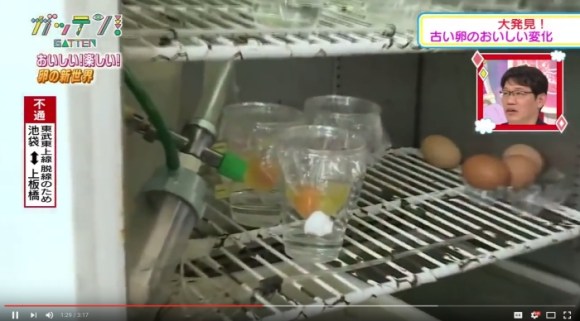
While it doesn’t answer the age-old question of which came first, the chicken or the egg, this high school class experiment is a pretty amazing one nonetheless.
Some years ago Japanese researchers published an exciting finding in a science journal that a chick could be hatched using a shell-less embryo, which became a total game-changer for scientists looking for ways to study how chicks grow during their developmental stages and how to conserve abandoned or damaged eggs from endangered species of birds.
One class at Oihama High School in Chiba Prefecture, Japan, however, elaborated on this strategy using a piece of Saran wrap to hold the fetus and provide just the right amount of oxygen flow, in addition to providing it with calcium and water.
A video of the experiment, which was recently broadcast on national television, quickly caught international attention, and it’s not hard to see why after watching the video below.
The whole process takes less than a month and has a 60 percent success rate, which is the highest of any shell-less hatching process so far. It only takes three days for the chick’s heart to begin beating, and by day 21 it’s fully developed.
The process is actually surprisingly simple. After stretching out some plastic wrap, the egg shell is cracked and the contents are transferred carefully to the plastic wrap.
After that the egg is artificially fertilized and the placed in an incubator where it will develop (mostly) naturally.
▼ Without the shell, the students were able to observe
the heart beating during development.
▼ A zoomed look at the egg with the beating heart…
▼ 21 days later, the full form of the chick can be clearly seen!
For a full translation of the video, you can check out this Facebook video from the fine folks over at Spoon and Tamago.
The experiment requires a lab and a sterile environment, so for now it isn’t something that can be replicated at home, but that just goes to prove just how talented these students are and how incredible their success has been.
Source: Science Alert, YouTube
Feature/top image: YouTube
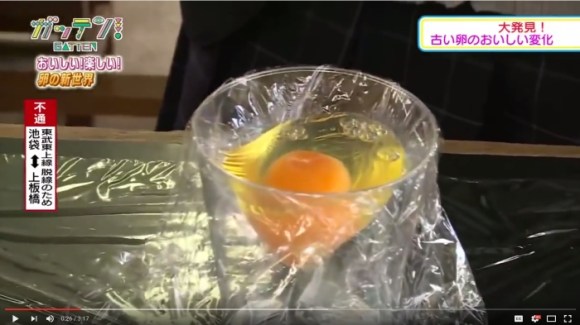
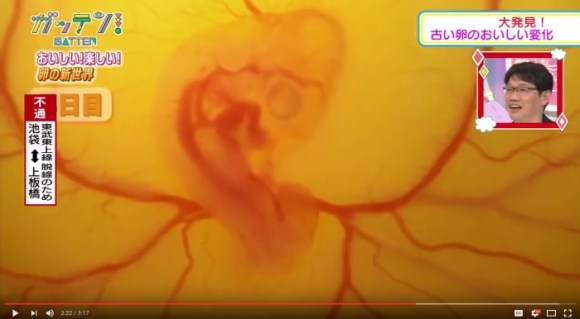
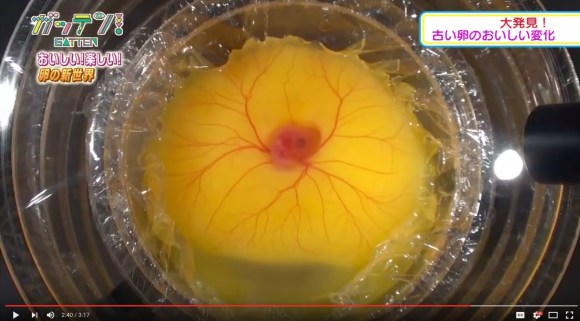
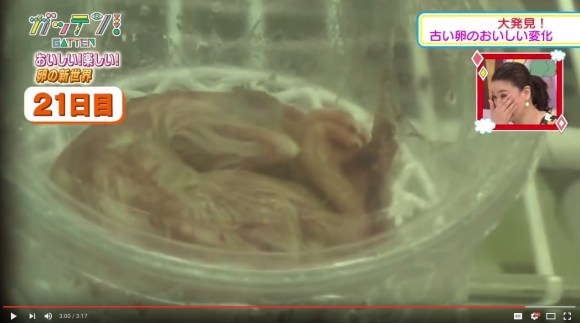
 Disillusionment at Tsukiji’s tourist-target prices led us to a great ramen restaurant in Tokyo
Disillusionment at Tsukiji’s tourist-target prices led us to a great ramen restaurant in Tokyo Japan may add Japanese language proficiency, lifestyle classes to permanent foreign resident requirements
Japan may add Japanese language proficiency, lifestyle classes to permanent foreign resident requirements The 10 best ryokan inns in Japan, as chosen by travelers
The 10 best ryokan inns in Japan, as chosen by travelers Studio Ghibli bean bag plushies let you bond with animals of Princess Mononoke, Castle in the Sky
Studio Ghibli bean bag plushies let you bond with animals of Princess Mononoke, Castle in the Sky Sanrio lucky bag gives you cute My Melody and Kumori merch, all your money back in burgers coupons
Sanrio lucky bag gives you cute My Melody and Kumori merch, all your money back in burgers coupons Disillusionment at Tsukiji’s tourist-target prices led us to a great ramen restaurant in Tokyo
Disillusionment at Tsukiji’s tourist-target prices led us to a great ramen restaurant in Tokyo Japan may add Japanese language proficiency, lifestyle classes to permanent foreign resident requirements
Japan may add Japanese language proficiency, lifestyle classes to permanent foreign resident requirements The 10 best ryokan inns in Japan, as chosen by travelers
The 10 best ryokan inns in Japan, as chosen by travelers Studio Ghibli bean bag plushies let you bond with animals of Princess Mononoke, Castle in the Sky
Studio Ghibli bean bag plushies let you bond with animals of Princess Mononoke, Castle in the Sky Sanrio lucky bag gives you cute My Melody and Kumori merch, all your money back in burgers coupons
Sanrio lucky bag gives you cute My Melody and Kumori merch, all your money back in burgers coupons Old-school titillation: A trip to one of Tokyo’s few surviving “telephone clubs”
Old-school titillation: A trip to one of Tokyo’s few surviving “telephone clubs” Muji Hotel Ginza: New accommodation in Tokyo takes Japanese minimalism to the next level
Muji Hotel Ginza: New accommodation in Tokyo takes Japanese minimalism to the next level Osaka man arrested for selling colorized version of the original Godzilla from 1954
Osaka man arrested for selling colorized version of the original Godzilla from 1954 Lacquerware supplier to emperor of Japan and Pokémon team up for new tableware
Lacquerware supplier to emperor of Japan and Pokémon team up for new tableware A Japanese dating app matched our bachelorette with a Buddhist monk, and she learned some things
A Japanese dating app matched our bachelorette with a Buddhist monk, and she learned some things 7-Eleven Japan starts new temporary luggage storage service in over 300 branches
7-Eleven Japan starts new temporary luggage storage service in over 300 branches Starbucks teams up with 166-year-old Kyoto doll maker for Year of the Horse decorations【Photos】
Starbucks teams up with 166-year-old Kyoto doll maker for Year of the Horse decorations【Photos】 Tokyo’s Tsukiji sushi neighborhood asks tour groups to stay away for the rest of the month
Tokyo’s Tsukiji sushi neighborhood asks tour groups to stay away for the rest of the month Street Fighter Hadouken Churros to be launched and eaten in Tokyo, Okami pudding on offer too
Street Fighter Hadouken Churros to be launched and eaten in Tokyo, Okami pudding on offer too Japanese woman mistaken for bear
Japanese woman mistaken for bear Return of Totoro sequel short anime announced for Ghibli Park
Return of Totoro sequel short anime announced for Ghibli Park Starbucks Japan releases new zodiac chilled cup drink for 2026
Starbucks Japan releases new zodiac chilled cup drink for 2026 Is this the most relaxing Starbucks in Japan?
Is this the most relaxing Starbucks in Japan? Starbucks on a Shinkansen bullet train platform: 6 tips for using the automated store in Japan
Starbucks on a Shinkansen bullet train platform: 6 tips for using the automated store in Japan Japan’s human washing machines will go on sale to general public, demos to be held in Tokyo
Japan’s human washing machines will go on sale to general public, demos to be held in Tokyo Japanese train company is letting fans buy its actual ticket gates for their homes
Japanese train company is letting fans buy its actual ticket gates for their homes Is China’s don’t-go-to-Japan warning affecting tourist crowds in Tokyo’s Asakusa neighborhood?
Is China’s don’t-go-to-Japan warning affecting tourist crowds in Tokyo’s Asakusa neighborhood? Starbucks Japan unveils new Christmas goods and a rhinestone tumbler that costs 19,500 yen
Starbucks Japan unveils new Christmas goods and a rhinestone tumbler that costs 19,500 yen Tokyo considering law requiring more trash cans following litter increase in heavily touristed area
Tokyo considering law requiring more trash cans following litter increase in heavily touristed area Nintendo’s Kirby now delivering orders at Kura Sushi restaurants, but not in Japan
Nintendo’s Kirby now delivering orders at Kura Sushi restaurants, but not in Japan Tokyo event lets you travel back in time, for free, to celebrate 100 years since Showa era start
Tokyo event lets you travel back in time, for free, to celebrate 100 years since Showa era start Survey asks foreign tourists what bothered them in Japan, more than half gave same answer
Survey asks foreign tourists what bothered them in Japan, more than half gave same answer Japan’s deadliest food claims more victims, but why do people keep eating it for New Year’s?
Japan’s deadliest food claims more victims, but why do people keep eating it for New Year’s? We deeply regret going into this tunnel on our walk in the mountains of Japan
We deeply regret going into this tunnel on our walk in the mountains of Japan Studio Ghibli releases Kodama forest spirits from Princess Mononoke to light up your home
Studio Ghibli releases Kodama forest spirits from Princess Mononoke to light up your home Major Japanese hotel chain says reservations via overseas booking sites may not be valid
Major Japanese hotel chain says reservations via overseas booking sites may not be valid Put sesame oil in your coffee? Japanese maker says it’s the best way to start your day【Taste test】
Put sesame oil in your coffee? Japanese maker says it’s the best way to start your day【Taste test】 The top 10 annoying foreign tourist behaviors on trains, as chosen by Japanese people【Survey】
The top 10 annoying foreign tourist behaviors on trains, as chosen by Japanese people【Survey】 No more using real katana for tourism activities, Japan’s National Police Agency says
No more using real katana for tourism activities, Japan’s National Police Agency says Starbucks Japan reveals new sakura drinkware collection, inspired by evening cherry blossoms
Starbucks Japan reveals new sakura drinkware collection, inspired by evening cherry blossoms Old-school titillation: A trip to one of Tokyo’s few surviving “telephone clubs”
Old-school titillation: A trip to one of Tokyo’s few surviving “telephone clubs” Muji Hotel Ginza: New accommodation in Tokyo takes Japanese minimalism to the next level
Muji Hotel Ginza: New accommodation in Tokyo takes Japanese minimalism to the next level Osaka man arrested for selling colorized version of the original Godzilla from 1954
Osaka man arrested for selling colorized version of the original Godzilla from 1954 Lacquerware supplier to emperor of Japan and Pokémon team up for new tableware
Lacquerware supplier to emperor of Japan and Pokémon team up for new tableware A Japanese dating app matched our bachelorette with a Buddhist monk, and she learned some things
A Japanese dating app matched our bachelorette with a Buddhist monk, and she learned some things Tokyo’s Tsukiji sushi neighborhood asks tour groups to stay away for the rest of the month
Tokyo’s Tsukiji sushi neighborhood asks tour groups to stay away for the rest of the month All-you-can-eat oboro tofu restaurant in Kyoto is a guilt-free experience
All-you-can-eat oboro tofu restaurant in Kyoto is a guilt-free experience Starbucks Japan releases new zodiac chilled cup drink for 2026
Starbucks Japan releases new zodiac chilled cup drink for 2026 How to speak Japanese like a gyaru【2024 edition】
How to speak Japanese like a gyaru【2024 edition】 Drunk cycling can result in an instantly suspended driver’s license in Japan
Drunk cycling can result in an instantly suspended driver’s license in Japan More Than a Capsule Stay: Why Solo Travelers Choose “global cabin Yokohama Chinatown”
More Than a Capsule Stay: Why Solo Travelers Choose “global cabin Yokohama Chinatown” Sanrio and Sonic the Hedgehog characters become fast friends with new plushie collection
Sanrio and Sonic the Hedgehog characters become fast friends with new plushie collection Street Fighter Hadouken Churros to be launched and eaten in Tokyo, Okami pudding on offer too
Street Fighter Hadouken Churros to be launched and eaten in Tokyo, Okami pudding on offer too Japanese convenience store Family Mart adding crane games to thousands of branches
Japanese convenience store Family Mart adding crane games to thousands of branches
Leave a Reply